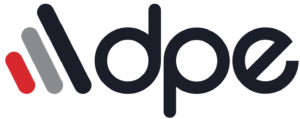Poverty and its associated factors have a profound impact on populations, leading the United Nations to establish Sustainable Development Goals (SDGs) with the aim of ending poverty in all its forms by 2030. Poverty significantly affects health through unaffordability of healthcare options, inaccessibility to information, lack of time for seeking care, and compromised nutrition.
In Kenya, SDG Goals 3 and 5, which focus on ensuring healthy lives and promoting well- being for all, as well as achieving gender equality, have not been fully achieved due to various barriers. These barriers include infrastructural/systemic, social, physical, and economic impediments that hinder progress in achieving human rights, equity, and gender parity in health programming among vulnerable populations in the country. These obstacles create a vicious cycle that perpetuate an unjust system, leading to exclusive interventions that further marginalize vulnerable communities.
Health policymakers and programs in Kenya face two significant challenges: determining when to roll out health information campaigns to vulnerable populations and understanding how health information spreads within the population to influence their behaviors. This is a sub-domain commonly referred to as social behavior change (SBC) within the larger population health domain.
Health literacy inequalities, often a result of these challenges, are prevalent among vulnerable households, affecting decision-making, health-seeking behavior, and prioritization among household genders. This directly impacts the uptake of SBC interventions among these populations.
When conventional SBC interventions fail to optimally ignite positive health-seeking behaviors, vulnerabilities and inequities become amplified, and the health burden grows. To ensure that vulnerable populations receive the optimal care they deserve (as a human right) and address the needs of users in making the right and timely healthcare decisions, conventional processes relied upon by health programs must be updated to include the use of AI and Large Language Models (LLMs).
We want to be at the forefront of the use of AI and LLMs in informing health decision- making and messaging that considers the social, economic, cultural, and physiological needs of households.
We believe LLMs can engender evidence-based SBC processes, support tailored programmed interventions aimed at vulnerable households, and aid in faster decision making to improve uptake and sustainability of disease prevention and control efforts in Kenya.
